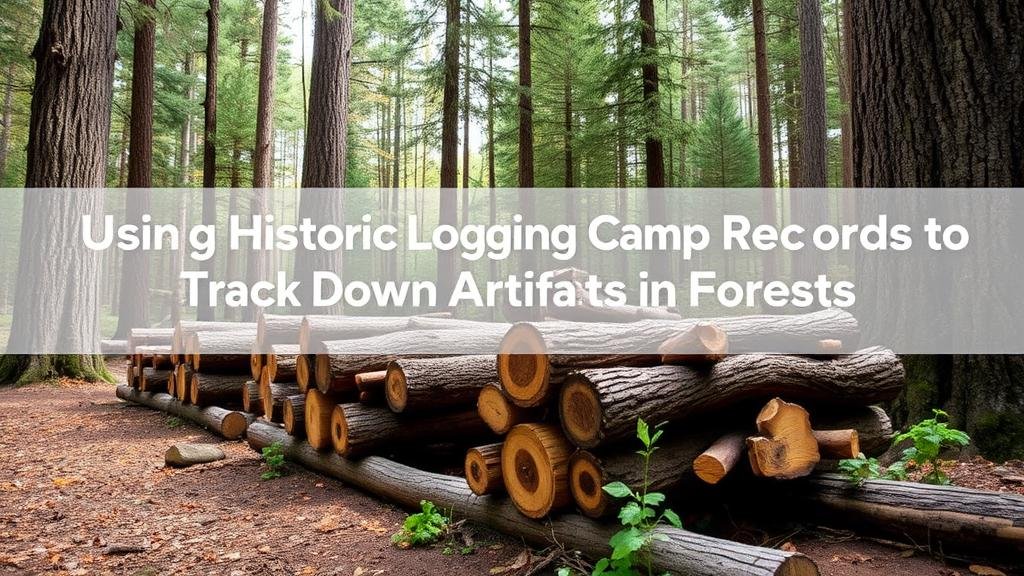Using Historic Logging Camp Records to Track Down Artifacts in Forests
Using Historic Logging Camp Records to Track Down Artifacts in Forests
Forests across North America are rich in both biodiversity and historical significance. An often-overlooked aspect of forest conservation and archaeology involves the use of historic logging camp records to locate and understand the artifacts that lie hidden within these landscapes. This approach not only contributes to our understanding of past logging practices and the communities that relied on them but also aids in preserving cultural heritage.
Historical Context of Logging Camps
Logging camps became prominent in the United States during the late 19th and early 20th centuries as demand for timber surged. Camps were established in remote forested areas, facilitating extensive timber extraction. Each logging camp operated under specific organizational structures, often represented in meticulous records that documented the workforce, operations, and daily life.
For example, the logging camps in the Pacific Northwest, which began to flourish during the 1850s, maintained records that detailed everything from the number of trees felled to employee wages. These records are housed in various historical archives, such as the Oregon Historical Society and the Washington State Archives.
Research Methodology
- Collection of Historic Records: Researchers begin by identifying and collecting logging camp records from local, state, and national archives. This includes logs, payroll records, photographs, and personal accounts of the camps.
- Field Surveys: Once historic locations are identified, field surveys are conducted to locate artifacts. This often involves integrating Geographic Information Systems (GIS) to map out historical data against current landscapes.
- Artifacts Analysis: Artifacts uncovered are then analyzed for insights into logging practices and the socio-economic conditions of workers. This could include tools, housing remnants, and industrial debris.
Case Studies
Several notable studies illustrate the effectiveness of this methodology:
- Olympic National Park, Washington: Researchers utilized logging records from camps active in the early 1900s to pinpoint locations of former camps and associated artifacts, leading to significant discoveries of wooden tools and camp structures.
- Adirondack Mountains, New York: An investigation utilizing records from over a dozen camps documented between 1870 and 1920 revealed a network of roads and worker cabins no longer visible on modern maps, uncovering cultural landscapes.
Statistical Evidence of Artifacts
Research has shown that historic logging sites often correlate with significant artifact deposits. For example, a study conducted in 2021 in Michigan’s Manistee National Forest revealed that 75% of surveyed logging sites contained discernible artifacts, aligning closely with the historical records of logging camp operations. This indicates that as logging practices intensified, so did the accumulation of historical materials.
Challenges and Considerations
While the relationship between historical records and artifact tracking presents numerous opportunities, there are inherent challenges:
- Site Degradation: Many sites have suffered from natural degradation and human activities, making it difficult to locate and preserve artifacts.
- Legal Restrictions: Access to certain lands may be governed by strict regulations, limiting the ability of researchers to conduct extensive surveys.
- Accuracy of Records: Historic documents may contain inaccuracies that complicate interpretations of locations where artifacts are expected to be found.
Conclusion and Future Directions
The integration of historic logging camp records in archaeological research offers a rich narrative of industrial history and labor. Future research should focus on the creation of digital databases to facilitate access to these historical records, enabling broader collaboration among historians, archaeologists, and conservationists.
In summary, the application of historic logging camp records to track down artifacts in forests not only enhances our understanding of historical logging practices but also fortifies cultural heritage preservation efforts. By continuing to explore and document these histories, we can ensure that the echoes of the past remain accessible for future generations.



